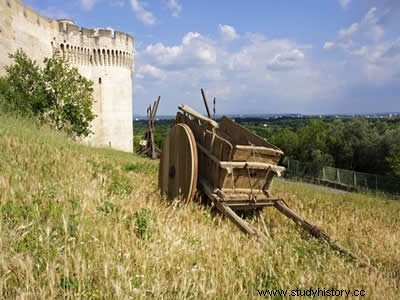
By Tales Pinto
During the period known as the High Middle Ages, which comprised the actions of men on the European continent between the 5th and 11th centuries, wood played an important role in material production from the life of medieval men.
Mainly extracted from the woods that surrounded the housing and agricultural areas, wood was used for a variety of purposes. The woods were included in the areas designated as uncultivated , nickname given because there is no human activity in the work of the land, being a space for hunting and vegetable and mineral extraction. When compiling references to the uses of wood in the studies of various specialists of the Middle Ages, the Portuguese historian João Bernardo points out several uses for wood during this period:
As a fuel, it was used in manufactures for the production of metallurgy, salt, glass, ceramics, as well as lime and gypsum; in the domestic environment, such as in the kitchen, for heating and lighting. The ashes were used as raw material for the production of soap and detergents, dyeing, the manufacture of glass and fertilizers.
In the construction of buildings, it was present in fortifications, stockades, bridges, ships and other means of transport. The wood was also used to make numerous agricultural work tools, such as ploughs. Furniture and utensils used in everyday life, such as those intended for food and various other uses, had wood as their raw material. Even military instruments had parts that were made from wood.
The French historian Marc Bloch even claimed that the Middle Ages lived under the sign of wood, such was the dependence of medieval men and women on this raw material. Even in the aesthetics of the buildings, there were claims that wooden constructions were more beautiful than those built of stone.
This dependence led João Bernardo to write that, as it occupied a central place in medieval productive life, there could possibly have been “no other technological system so entirely dependent on a single material” 1 , being used for such a wide range of activities. The historian also opposes the ecological theses, contrary to capitalist production, which criticize the use of coal and iron as the initial causes of environmental imbalances caused by industrial civilization, to the fact that the materials adopted in the beginnings of capitalism were a reaction to the exhaustion of wood in European forests.
In this way, the new raw materials and techniques contributed to the reduction of logging in forest areas, while decreasing the dependence on wood as the main raw material of the system medieval technology.
[1] BERNARDO, João. Power and Money . From Personal Power to the Impersonal State in the Manorial Regime, V-XV centuries. Part I. Porto:Afrontamento, 1995. p. 320-322.
